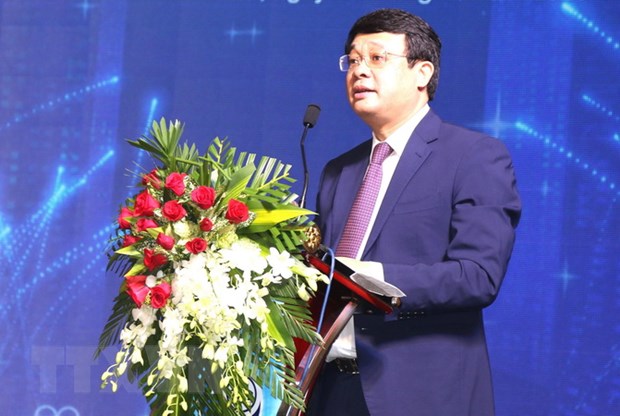 Economy
Economy


|
| Deputy Minister of Construction Bùi Hồng Minh .VNA/VNS Photo Xuân Tình. |
Amid mounting construction material prices, it is crucial to revise and refine existing legal frameworks to tackle issues delaying construction projects, allowing the projects to be finished on schedule. Deputy Minister of Construction Bùi Hồng Minh spoke to Vietnam News Agency about the current legal situation in the construction sector.
Although the systems of norms have been revised and modified, many entities in the construction sector still claim the systems are inadequate and inappropriate, causing difficulties in the implementation of construction projects. What do you think about this claim?
About 34,000 norms have been laid down so far under Decree No 10/2021/ND-CP on construction costs, of which 15,000 have been issued by the Ministry of Construction (MoC) to regulate general construction works.
The authorities have scrapped obsolete norms and introduced new norms to keep up with the times. The technological development toward green growth and energy-efficiency and the emergence of innovative materials in construction have underlined the need for frequent revisions of norms.
For this reason, the MoC, specialised management ministries and local authorities have regarded such revision as a regular task. Unfortunately, norms are still either absent or inappropriate in numerous projects, notably those related to innovative materials and new technologies.
Regarding roadworks, the absence of norms can be observed in around 32 construction works, mainly those related to the construction of cable-stayed bridges and the construction of road embankments with innovative materials.
Some projects have designs, construction methods and construction conditions significantly different from those specified in current norms, rendering them unsuitable for the projects.
What are the main issues holding back construction projects?
Decree No 10 stipulates that the People’s Committees of provinces determine and publicise input and output price indices in their provinces on a quarterly basis or earlier if necessary, or authorise Departments of Construction to do so to reflect the price changes in the market.
Recent military conflicts in several countries, coupled with a prolonged pandemic, have resulted in unpredictable price volatility. Material prices have climbed by over 30 per cent at some points.
Meanwhile, there are normally delays between publicised prices and actual prices in the market. The delays have led to a situation where publicised prices of key materials in many localities do not keep pace with the market prices.
Circular No 11/2021/TT-BXD issued by the MoC set out guidelines for determining estimated construction costs. However, some localities have yet to publicise the costs of transporting materials, notably sand, stones and soil.
The absence of such publicised costs is a setback for cost estimation and cost adjustment in various projects, forcing the contractors to slow down or even halt their construction works to wait for cost publication.
What solutions has the MoC offered to deal with norm-related issues, thereby stepping up construction works?
Decree No 10 has put in place regulations on new norms and revised norms, and Circular No13/2021/TT-BXD has laid down guidelines for the determination of those norms. Additionally, Decree No 10 has defined the responsibility of relevant entities to develop estimated norms to enrich the current systems of norms, providing the basis for cost estimation and cost adjustment.
Unfortunately, many consulting units and project investors still do not get used to the above-mentioned norms. They have difficulty estimating construction costs in line with those legal documents.
Mounting materials costs are expected to continue to affect construction projects, notably major projects. What solutions and suggestions has the MoC offered to handle the situation?
Regarding major projects such as the North-South Expressway, the MoC will work with the Ministry of Transport and the provinces involved to identify issues holding back the projects and come up with solutions to the issues.
Notably, the determination and publication of material prices and output price indices under Resolution No 18/NQ-CP are facing numerous obstacles. The MoC has assigned the Construction Economics Department and other specialised agencies the task of finding solutions to remove obstacles and ensure the smooth application of the resolution.
As the increases in fuel prices and material prices have become more frequent, monthly publication is inadequate to reflect actual prices in the market. The MoC thus requests local authorities to publicise prices any time there are changes.
Regarding road construction materials produced and used locally that haven't been included in the list of publicised prices, the MoC urges project investors to report to local authorities on the materials, so that the latter could determine and publicise their prices.
The MoC has been directing its affiliated agencies, as well as requesting specialised management ministries and local authorities, to identify issues within their competence and offer solutions to the issues to step up construction works. Regarding issues beyond their competence, the MoC will report to the Government and the Prime Minister and suggest solutions to the issues.
The MoC aims to improve current legal frameworks to better handle emerging issues in the construction sector, enhance construction management and construction efficiency, and develop a highly transparent and competitive construction market to end wasteful practices in construction. — VNS




